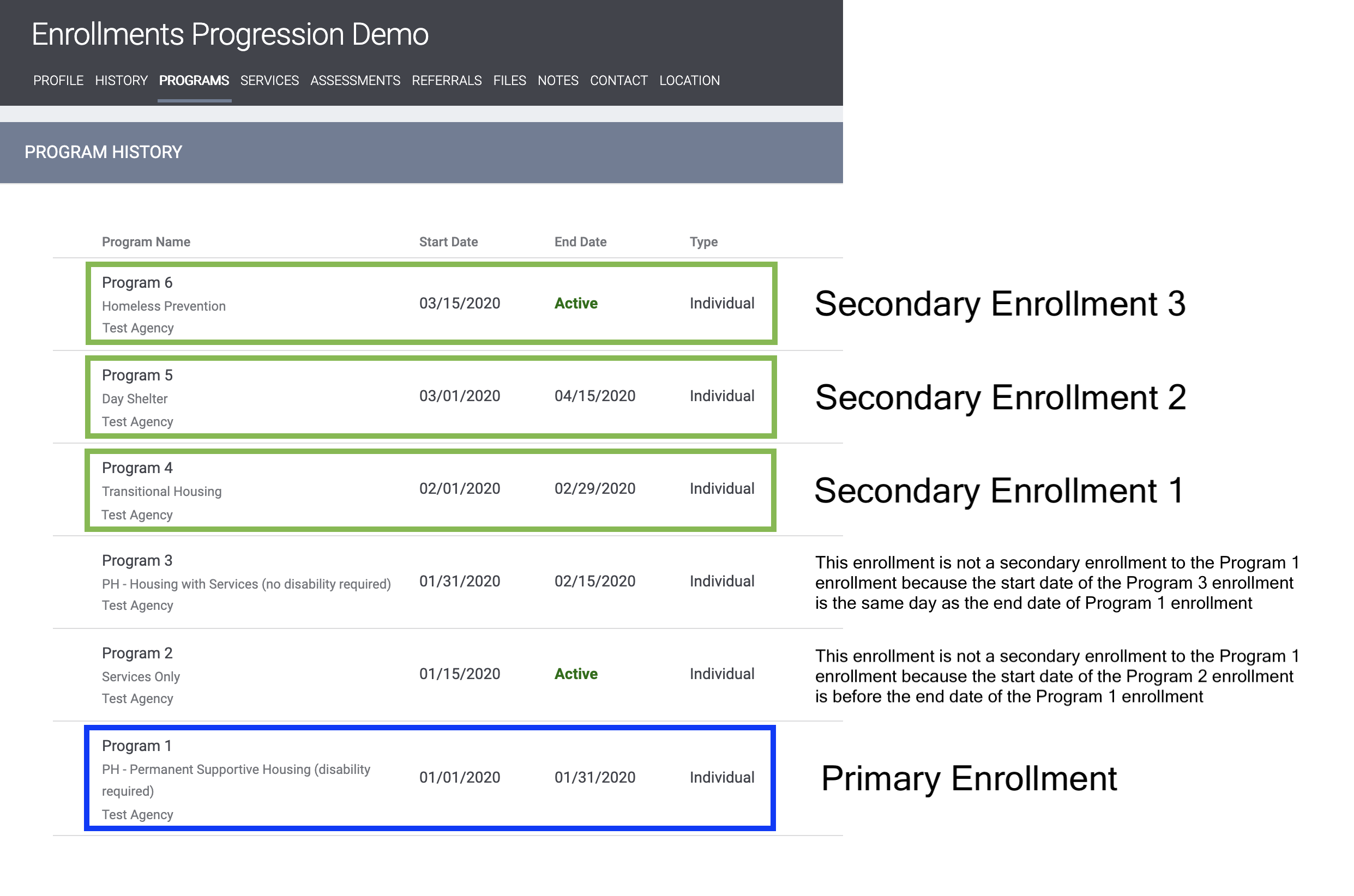Enrollments Progression Model
What is it?
The Enrollments Progression Model is designed to provide users with a tool to view a client's enrollment path through the user's system. This model takes a specific enrollment (referred to as Primary Enrollment) and examines up to ten Subsequent Enrollments, which are enrollments that have a start date after the exit date of the Primary Enrollment.
Who can access the model?
At this time, access is limited to standalone data analysis (Looker) users who have no restrictions on their access to agencies, CoCs, or counties within their instance and who are able to view all sensitive data. This access limitation is due to the design of the model, which aims to give data analysis users a system-wide perspective.
If a user tries to access the model without the proper permissions, they will receive the following error message.

How to access the model?
While this model is in beta testing, this model will not appear in the Explores list within Looker. If you are interested in using the beta version of this model, please contact the Help Desk (support@bitfocus.com) to request access.
How to use the model?
While there are countless ways to use this model, the following is the recommended use for the current iteration of development.
In this model, "Primary Enrollment" is not a fixed enrollment, it is whichever enrollment you identify as the primary enrollment for your analysis. Every enrollment a client has can be a primary enrollment, depending on how you filter your Looks.
In the following example, the Program 1 enrollment is identified as the Primary Enrollment for the purpose of this analysis.

This is what the same client's record looks like using the Enrollments Progression Model, using Subsequent Enrollment Measures and pivoting the Subsequent Enrollment Order dimension.

Note that there is a required filter on this model, which is the End Date of the Primary Enrollment.
Using that same client as an example, in the following analysis, a user wanted to see the enrollments progression once the client exited the Transitional Housing program. This analysis then makes the Program 4 the Primary Enrollment.

And this is what that record looks like in the Enrollments Progression Model.

Note about design: This model has an intentionally minimal design in terms of included dimensions. It is designed to be merged with other models and provides the dimensions necessary for proper merging.